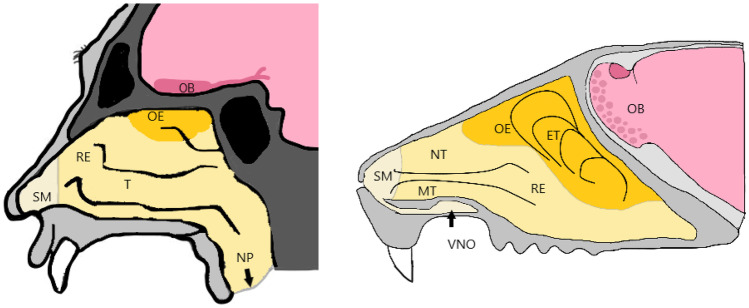Fig. 1.
Nasal cavity of humans (left) and rodents (right), showing the different regions within the nose. Starting with the squamous mucosa (SM) right at the nostril openings. The respiratory epithelium (RE) covers the main part of the nasal cavity in humans. Humans have three turbinates (T), the inferior turbinate, the middle turbinate as a part of the RE and the superior turbinate in the olfactory epithelium (OE). Rodents have the maxilloturbinates and nasoturbinates in the RE and the ethmoturbinates in the OE. The olfactory bulb (OB) is in close proximity to the cribriform plate and connected to the OE via the axons of the sensory neurons projecting towards the brain. The rodent nasal cavity further has a predominant vomeronasal organ (VNO) which also takes part in the olfaction of specific compounds

